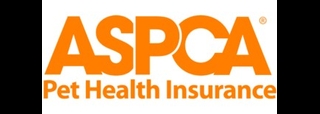- Coverage for additional treatments as recommended by a vet.
- Coverage for preventive testing and medications.
Pet Wellness Plans for 2025

Our evaluations and opinions are not influenced by our advertising relationships, but we may earn a commission from our partners’ links. This content is created by TIME Stamped, under TIME’s direction and produced in accordance with TIME’s editorial guidelines and overseen by TIME’s editorial staff. Learn more about it.
No matter how much you love your pet, getting the bill after an annual exam can make you question whether you need a companion animal. Even the healthiest pets require routine wellness checks, vaccines, and medication to prevent parasitic infestations, and none of that is cheap. That’s where pet wellness plans come in.
A pet wellness plan is an add-on to a pet insurance policy. For a small monthly premium, you’ll be covered for common routine treatments, from annual checkups and vaccines to spay/neuter surgery and teeth cleaning. The best pet wellness plans offer various perks that can make pet ownership more affordable.
Metlife’s preventative care add-on covers a variety of treatments, including annual exams, vaccines, teeth cleaning, and preventive medications. Where the coverage really shines, though, is in its additional treatments. If recommended by a vet for illness, injury, or prevention, Metlife may cover genetic testing, dewclaw removal, behavior training, and anal gland expression, among other treatments.
Metlife doesn’t offer coverage for microchipping, though, which may make some pet owners look elsewhere.
Pets Best offers two pet wellness plans: EssentialWellness and BestWellness. Pets Best lists transparent price ranges for both plans on its website, which means you can see at a glance whether or not a plan will fit your budget. You can also select your state from a drop-down menu to see coverage limits for each type of preventative treatment so that you know exactly what you’ll get for your money.
One thing to note is that Pets Best only reimburses $45 or $55 for vaccines, which is relatively low compared to other providers. However, it may be enough for animals needing one or two yearly vaccinations.
If you have a new puppy or have rescued a dog that needs to be spayed or neutered, a Spot wellness plan is an affordable way to do so. Spot covers animals as young as seven weeks—younger than some providers. Since spaying or neutering can be expensive, this coverage can be invaluable for pet owners needing either procedure.
Spot doesn’t have weekend customer service hours, which could be limiting for some customers. However, customer service is available from 8 a.m. to 8 p.m. EST during the week, so most pet owners can contact a representative when needed.
Lemonade offers three pet wellness plans: Preventative, Preventative+, and Puppy/Kitten Preventive packages. The latter is designed for animals younger than two years and covers spaying or neutering, microchipping, and up to six annual vaccines. This makes it an excellent choice for owners of puppies and kittens.
Lemonade’s wellness plans cover an annual wellness exam, a heartworm or FeLV/FIV test, an internal parasite or fecal test, and a blood test. The Preventive+ package adds heartworm or flea/tick medication and annual dental cleaning.
Some pet insurance companies only offer coverage for dental cleanings on their top-tier wellness plans, but ASPCA offers the coverage on both of its plans. Annual dental cleaning can be a powerful tool in preventing dental disease in pets, so having this coverage is a huge plus. Additionally, the higher-tier Prime plan covers the Bordetella (kennel cough) vaccine for dogs, which isn’t always covered by wellness plans and may be required by some boarding or daycare facilities.
When you pay your monthly ASPCA pet insurance premiums, there will be a transaction fee, which can increase the cost of coverage. However, you can make claims easily using the ASPCA My Pet Insurance app, which can simplify the process for policyholders.
ManyPets wellness plan has a $600 annual limit, which is high compared to other providers. Customers can be reimbursed for up to $150 in each wellness category: routine exams and vaccines, tests and parasite prevention, dental cleanings and at-home dental, and vitamins and supplements. Pet insurance companies don’t typically cover the latter category, making this coverage considerably beneficial.
There’s only one wellness plan available, so you won’t be able to pick and choose. However, cat owners will enjoy relatively low wellness premiums while still getting the full $600 annual benefit, which can make the cost of a ManyPets plan well worth it.
| Pet Insurance Company | Best for | Monthly cost (dog) | Monthly cost (cat) | Treatments covered | Maximum benefit amount |
|---|---|---|---|---|---|
Metlife | Additional treatments | $16.99 to $33.87 | $16.98 to $33.86 | Wellness exam, parasite tests and prevention, vaccines, teeth cleaning, spay/neuter, supplements and vitamins, anal gland expression, genetic testing, behavioral training | $575 |
Pets Best | Transparent pricing | $19.08 to $28.58 | $19.08 to $28.58 | Wellness exam, microchipping, spay/neuter, teeth cleaning, vaccines, diagnostic panels, preventative medication | $535 |
Lemonade | Puppies and kittens | $16.50 to $25.06 | $10.34 to $16.46 | Wellness exam, fecal or internal parasite exam, blood work, vaccines, heartworm or FeLV/FIV test, flea/tick or heartworm medication, routine dental cleaning | $480 |
Spot | Spay and neuter coverage | $9.95 to $24.95 | $9.95 to $24.95 | Wellness exam, fecal or internal parasite exam, spay/neuter, vaccines, teeth cleaning, deworming, diagnostic panels | $450 |
ASPCA | Dental coverage | $9.95 to $24.95 | $9.95 to $24.95 | Wellness exam, teeth cleaning, deworming, diagnostic tests, vaccines, spay/neuter | Not specified |
ManyPets | High annual limit | $46.04 | $32.88 | Wellness exam, vaccines, parasite tests and prevention, teeth cleanings, vitamins and supplements | $600 |
*Website quote mechanism used to get figures for prices. Prices listed are for a 3-year-old, male, medium-sized, mixed-breed dog in Dayton, Ohio; and a 3-year-old, male, domestic shorthair cat in Dayton, Ohio.
To determine the best pet wellness plans, we researched the top pet insurance providers. We checked to see how extensive the coverage was with each provider, looked for unique coverages, and reviewed annual maximum benefit amounts.
Once we narrowed our list, we checked to see which stood out the most and awarded them titles based on their strengths.
You should consider several factors when searching for a pet wellness insurance plan. Cost is a big one; after all, a plan that doesn’t fit into your budget is not the right plan for you.
You’ll also need to consider what’s covered. If you need your pet wellness plan to include coverage for teeth cleaning, check before signing up to ensure the one you’re considering provides this coverage.
Finally, remember that pet wellness plans are offered as add-ons to pet insurance plans. If the pet insurance plan doesn’t have the coverage you need, you’ll have to look elsewhere, even if the wellness plan seems to check all your boxes. You don’t want to pay a premium for coverage you don’t need or want just to get wellness coverage.
A pet wellness plan is usually sold as an add-on coverage for a pet insurance policy. It can cover preventive care for your pet and alleviate the burden of a large vet bill every year after your pet’s annual checkup.
A pet wellness plan is a common add-on to a pet insurance policy because it can help prevent severe medical issues that would be more expensive to treat.
A pet wellness plan is a type of preventive coverage that pays for routine care, including annual exams, vaccinations, and testing for intestinal parasites or common illnesses.
While pet insurance covers vet expenses related to accidents and illness, a pet wellness plan covers routine care. Both are important for pet owners to consider.
Pet insurance is designed to help pay unexpected vet bills if your animal is injured or ill. You pay a monthly or annual premium, and if your pet needs vet care, you can submit a claim with your insurer for reimbursement. You’ll still pay a portion of the bill as your deductible, but the out-of-pocket cost will be considerably less if you have pet insurance.
A pet wellness plan can help prevent treatable illnesses through vaccinations, preventive tests and medications, and annual wellness exams. The cost of preventive treatment for a pet can be high. Wellness plans break the cost up so you don’t end up with a huge vet bill every year.
The exact coverage will depend on your provider, but most pet wellness plans include the following:
Pet wellness plans do not cover veterinary expenses related to accidents or injuries. Some of the most common procedures or treatments excluded from pet wellness coverage include
The cost of a pet wellness plan varies among providers. At the insurance companies listed here, monthly prices for pet wellness plans range from $9.95 to $46.04. However, the exact cost will depend on the type, age, size, and breed of pet; insurance company; preexisting conditions; and ZIP code.
Adding a pet wellness plan to a pet insurance policy can cover most of your pet’s medical needs, from annual wellness checks to emergency care after an accident. Get quotes from several providers to see which suits your needs and budget best.
Yes, although the exact amount of time will depend on the provider. Pet insurers generally have waiting periods of one to two weeks before you can submit a claim.
No. Pet wellness plans are designed to cover regular preventive care and are not meant to cover preexisting conditions, such as blood disorders or hip dysplasia.
It depends. If you have a young puppy or kitten who requires a lot of initial vaccinations and needs to be spayed or neutered, a pet wellness plan can help cover these expenses. Even if your pet is older, a pet wellness plan can still be worth it, as the cost of routine treatments such as dental cleanings can quickly add up. But remember that the additional care comes at a cost. And if you have a young, healthy pet, you may end up paying for coverage you don’t often use.
The information presented here is created by TIME Stamped and overseen by TIME editorial staff. To learn more, see our About Us page.









